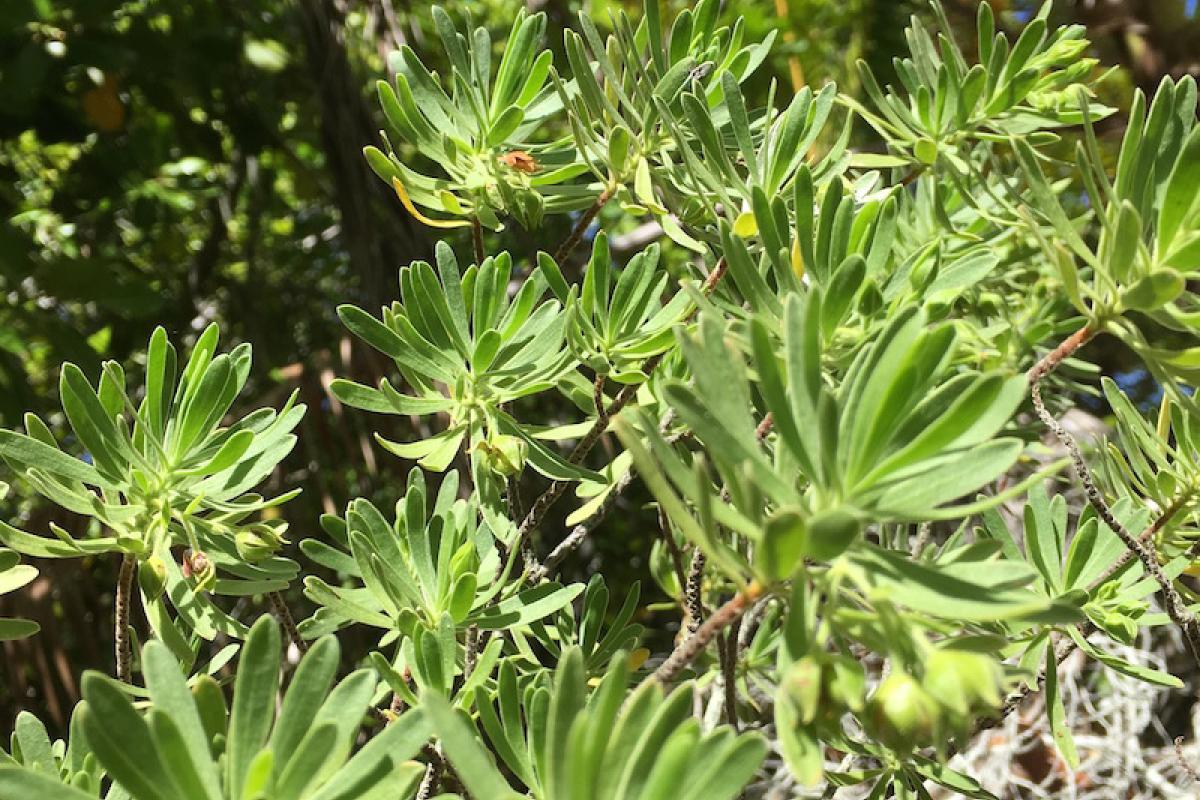Bay cedar (Suriana maritima) is one of our most salt tolerant shrubs. It tolerates salt breezes and even some salt water flooding during storms. It likes moist, well drained soil, but is very drought tolerant at the same time. You will find the bay cedar along coastlines from the Florida Keys up to the salt marshes of northern Florida. Of course it likes the sun but does well in partial shade as well. It grows well to about six feet in height in a scrubby environment, and can be persuaded to grow as tall as 10 feet in a more cultivated setting.
The velvety, silver green leaves of the bay cedar resemble the needles of a regular cedar and it produces small yellow flowers that bloom year around on this coastal native. Bay cedar can be directly propagated from the fallen seeds that can be collected as they fall off naturally. Planted as a shrub along with other coastal plants like joewood, sea purslane, beach elder and prickly pear cactus it makes a nice coastal beach planting that preserves our coastline and protects against beach erosion.
In an inland native garden, the bay cedar is attractive to butterflies, bees and birds. The larvae of the mallow and martial scrub hairstreak butterflies love to feast on the foliage. When planted in the inland landscape, regular watering and fertilizer would be advised. However, if planted on the ocean side of a dune, no extra care as this is truly its natural habitat.
Share the dunes with this salt loving plant or enjoy in your native landscape garden. Either way it loves the islands as much as we do.
This column is a joint effort by all at In The Garden, Sanibel’s local garden center located at 3889 Sanibel Captiva Road, Sanibel Island, Florida.
